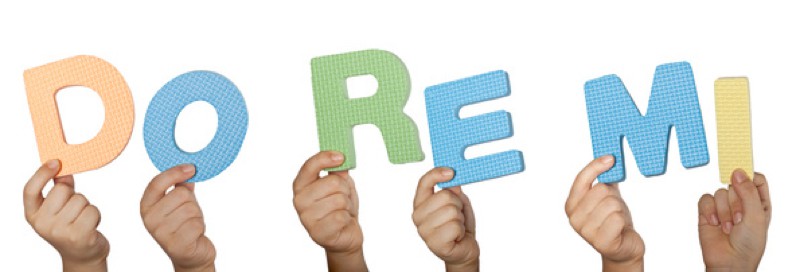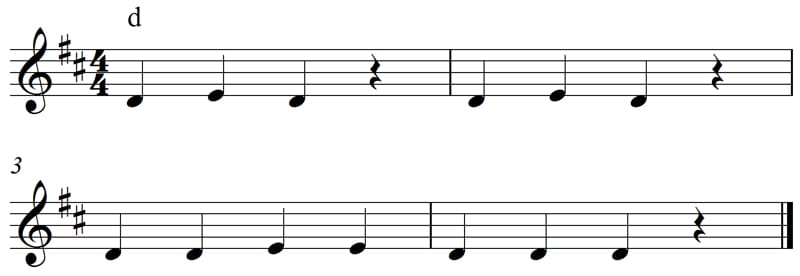#How to Practice Do Re Mi Scales In Singing
Creative Arts Solution
Foundation
Foundation
How to Practice Do Re Mi Scales In Singing
How to Practice Do Re Mi Scales In Singing
Last Updated:

Practicing Do Remi Scales in singing is an essential vocal exercise to strengthen your music senses in terms of harmony and pitches.
Almost everyone knows about Solfège. It teaches you on how to write down composed music, sing harmonies, and pitches. If you took musical lessons when you were a child, then you must be familiar with the Do Re Mi song.
It is an old song that is very suitable to be used in teaching the new singers /beginners on how to sing and read musical notes correctly. This old song still offers an effective way of teaching singers on how to pitch notes and understand music concepts.
Table of Contents [hide]
Benefits of Learning Do Re Mi Scales For Singers
1. Builds Foundation of Becoming A Pro Singer
Solfège helps one to learn songs faster and well. Once you learn its basic skills, you will be able to learn new music without hearing a tune played at first. With solmization, singers can be able to attribute distinct syllables to all notes within a musical scale. Solfège takes the most complicated system of 12 major keys and combines them to one thing. Without Solfège, a singer might sing more than 100 songs and take so many hours to learn new ones.
2. Improves Quality of the Vocal Pitching
Frequent use of Solfège syllables facilitates memorization while still helping the singer to recall the exact distance between intervals. When you practice with Solfège patterns, you will be able to improve the ability to pitch every note accurately. As new singer, you can also use Solfège to learn more about pitch relationships and the space between notes of scales.
Movable Do or Fixed-Do?
Solfège has two main methods of teaching; movable do and the fixed do system. The movable-do system is normally sung as the first note of the scale. Hence any key or scale can be used to develop a relative pitch. The fixed-do is based on a C major scale, and it’s always in line in creating a perfect pitch because A is sung as La while C is sung as “Do.”
It doesn’t matter which system you use since both movable do and fixed do are great tools for helping you to develop muscle memory for pitch. Just use the one that you will find the most applicable.
Do Me Mi Fa Sol La Ti Do Drill Best Practices
1. Solfège

The “movable ‘do’” is one of the most popularly used system, other major scales such as ‘re mi fa so la ti do’ follows in a sequence. When you assign names to the notes, you provide your brain with a very powerful framework for understanding music.

The main reason of doing this, is to learn which pairings of the solfa syllables corresponds with the intervals. For example, you might find out that the sound of ‘do’ is a perfect fifth when practicing the do pentatonic scale. After several practices, you will also notice that the ‘la’ ‘mi” also gives a perfect fifth too. These practices can help you to recognize intervals in different musical contexts and also learn some new skills.
2. Sight Singing

Sight singing is also known as prima vista or vocal sight reading, and it refers to the ability to sing and read music at a first sight. It’s one of the most important aspects of every great singer, and if mastered well, sight singing can help one to build confidence on stage performances.
Sight singing can help singers to improve their rhythmical skills and accuracy. If you want to perfect your skills in sight singing, practice with varied melodies from different keys and rhythmic variations.
You can practice ear training and sight singing together for a better result. If you want to sing your notes with a great voice, make use of ‘Audition” or inner hearing, and you will notice the difference. Mastering the hearing skills means that you can be able to picture how the notes sound without actually hearing them. If you do some exercises and practices on sight singing, you will eventually perfect your singing skills and become more natural at your presentations.
My Personal Thoughts And Advice On Learning Musical Scales For Singing
According to me, I would refer studying music as the same as studying a new language. If you have ever been in a grammar class before, studying musical theory is more similar to how grammar lessons are taught. Music is a subject that has its own prerequisites and analogies. I can compare composing music with technical writing, where you have an overall form. If you dig out more information about how music is composed and sung, you will realize that several terminologies and analogies might require one to take musical lessons.
If you start learning a new foreign language today, it will take you quite some time before you understand and apply it like a native speaker. Learning music can also be seen as a process of developing skills over a period of time and perfecting everything by using the experience in mind.
When taking music lessons, you will often feel bored and unmotivated, but if you apply the set up of learning a foreign language, you will eventually start to enjoy what you do. It takes quite some time to get a good feeling of the words from a new language but with time, things become more interesting as you get used to the terminologies and phrases. If you apply the same principals in music, you will never get bored or unmotivated to take lessons.
If you practice the Do Re Mi scales for some time, you will be able to strengthen your voice and identify weak areas that can be improved. Music can be used as a fun way of representing talents and skills.
Reference :BECOMESINGERS.COM
https://www.becomesingers.com/exercises/practice-re-mi-scales-singing





